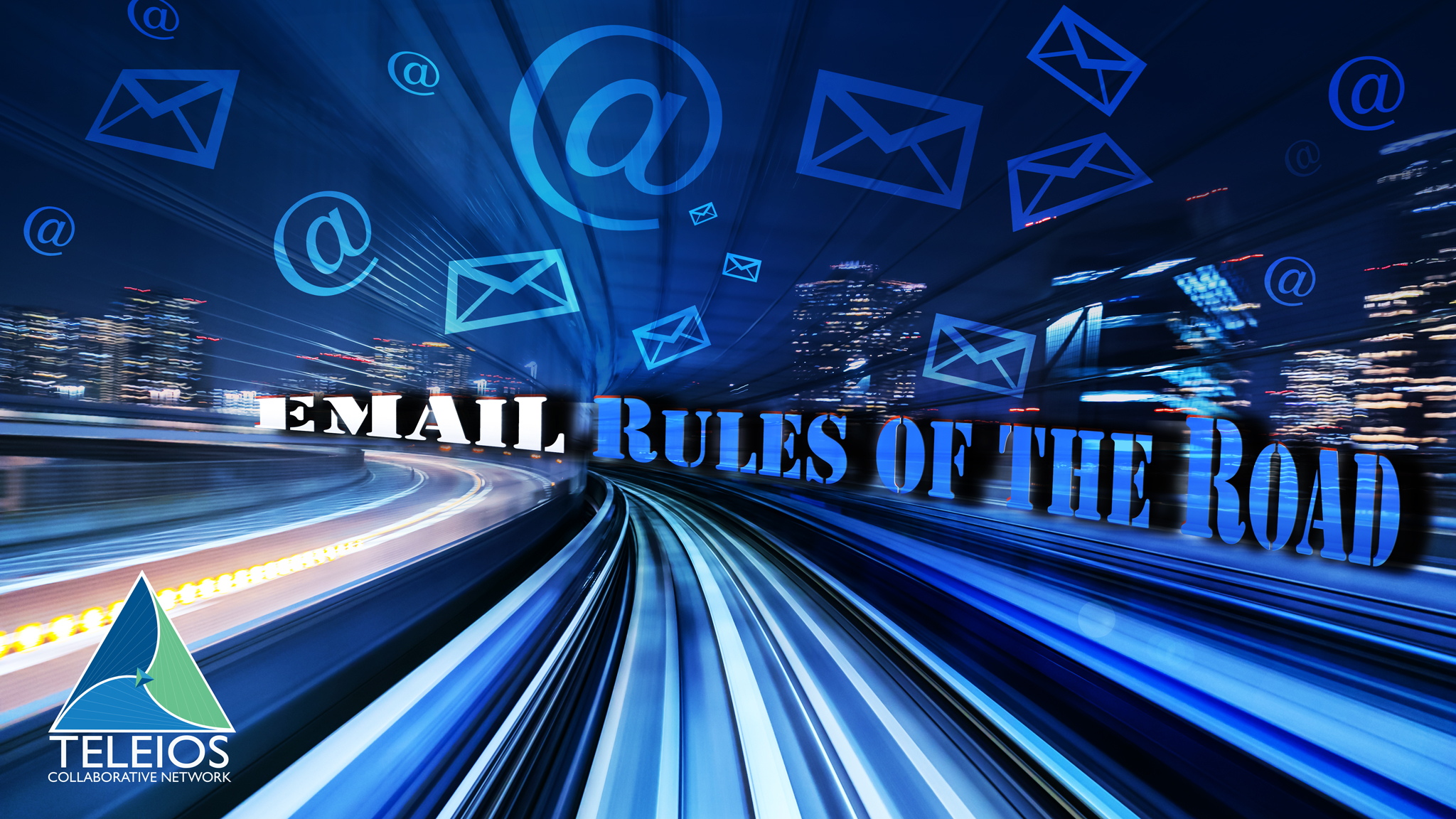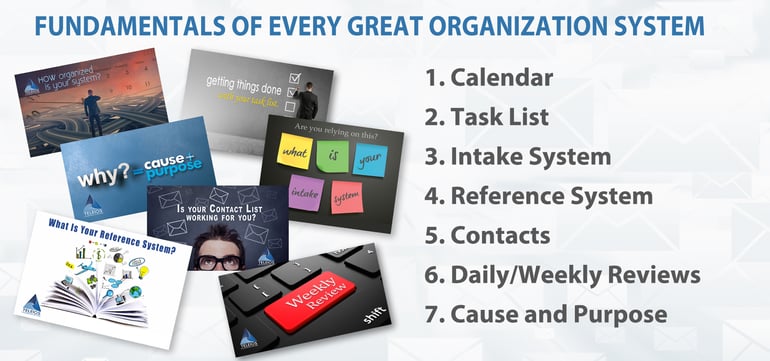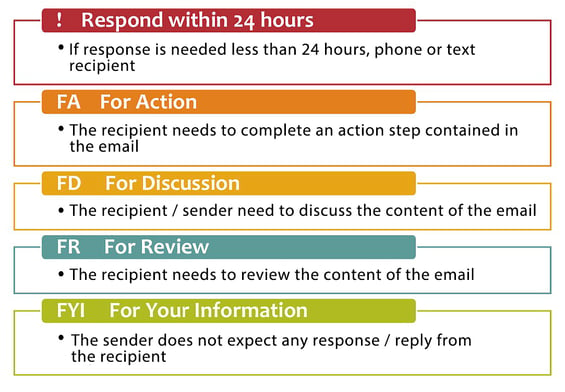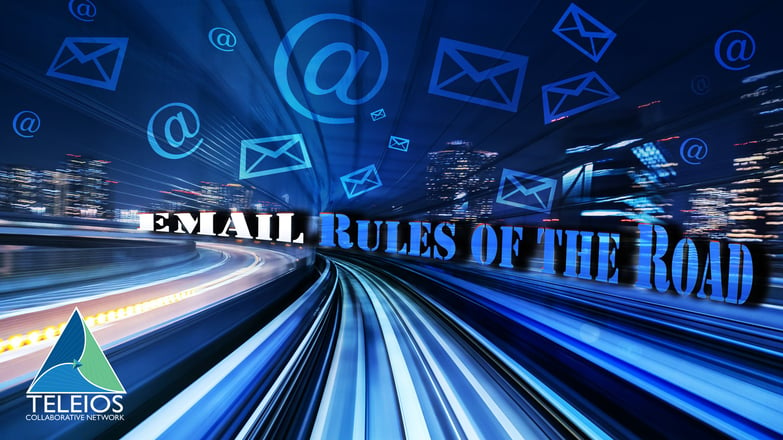
In 2025, email remains a cornerstone of workplace communication—especially as hybrid and remote teams continue to grow. But with overflowing inboxes, poor formatting, and vague intentions, miscommunication can quickly arise.
Email management continues to be a significant challenge for many professionals, especially in remote and hybrid environments. At one point, Chantelle, a member of the leadership team at Teleios Collaborative Network conducted an in-depth review of their own email habits to better understand the demands of digital communication.
In 2019, she processed approximately 25,000 legitimate emails—excluding spam, promotional content, newsletters, and solicitations. Each of these emails required active engagement: reading, responding, or acting on critical information and tasks. The volume felt substantial, prompting the question—is that typical, and is it necessary?
According to industry benchmarks, professionals receive an average of 121 emails per workday, roughly half of which are categorized as spam or non-essential. That equates to over 31,000 work-related emails annually—a staggering amount that underscores the importance of effective email management strategies and clear communication practices.
For organizations like Teleios Collaborative Network, which operates virtually across multiple time zones and regions, email remains a vital tool for asynchronous collaboration. It enables team members to communicate efficiently without disrupting varying work schedules—whether sending updates during a redeye flight or reaching out at the break of dawn.
Still, not every email carries the same level of urgency or relevance. This brings into focus the importance of curating better email habits: using clear subject lines, minimizing reply-all chains, and leveraging communication platforms more suited for real-time discussions when appropriate.
According to research cited in Forbes, the average office worker spends 2.5 hours a day reading and responding to an average of 200 emails, of which approximately 144 (mostly CCs and BCCs) are not relevant to their job. Seventy-two percent of emails are irrelevant?!
Add to this how the average professional manages their inbox and more time is lost with over-checking and re-reading email. Research indicates that professionals check their email every 37 minutes, or 15 times a day, on average. Without a dedicated Intake System that includes a conscious weekly clean-out plan for your inbox, professionals will have an average of 200 emails (excluding the 121 emails received daily) sitting in their inbox. With each visit to their inbox (15 times a day) our average professional will spend 4 seconds looking at each email and re-reading 10% of them, resulting in another 27 minutes lost to email each day. Consider that it can take people up to 23.25 minutes to fully recover and refocus on a task after an interruption, like checking email, and the amount of lost time and drop in efficiency and productivity is staggering.
→Learn more about Fundamentals of Every Great Organization System links will be provided at bottom of this blog.
Fortunately, TCN has developed a system for getting things done as part of its Fundamentals of Every Great Organization System (The Fundamentals) that includes focus on the Intake System and provides guidance in developing tools and habits to help manage your inbox. The Fundamentals provides email management guidelines that include a single-touch two-minute rule for emails (to help reduce time lost rereading email and develop your to-do list) and a weekly clean-out plan for overall inbox/intake management. Although The Fundamentals are vital to getting things done, let's look more closely at a tool that addresses some of the root causes of email overload, The Email Rules of the Road.
The very purpose of The Email Rules of the Road (The Rules) is to improve email communication to be as effective and efficient as possible by establishing rules to guide content and response timelines. The Rules place a premium on intentionality – being intentional with your purpose, content, and audience. The Rules urge you to ask yourself these questions before sending an email:
- Is the email needed? Is it necessary to business or is it redundant?
- Is the message appropriate? Would a different mode of communication be more effective? Is it compliant, professional, and inoffensive?
- Are you sending the email to the correct audience? Are the correct individuals in the “To” and “Cc” lines?
The Rules also encourage reducing or eliminating unnecessary emails based solely on pleasantries. While this is the most uncomfortable aspect of The Rules for many – it can feel rude not saying ‘thank you’ and ‘you’re welcome’ when good manners and social standards indicate that we should – think about how many less emails would be exchanged if we cut these out.
On the other hand, there is the guideline from The Rules is the call to action codes. These are short codes that should be used at the beginning of every subject line that tell your audience at a glance what is needed from them. Take a look:

A properly formatted subject line can convey a plethora of information instantly; for example: Subject: FA Annual Reports – Due COB 01/20/2020 EOM
Without even opening an email with this subject line, I know:
- FA – an action is needed from me
- The task needed (Annual Reports)
- When it’s due (Close of Business 01/20/2020)
- That there is no more content in the body of the email, so I don’t even need to open it (EOM = End of Message)
In addition to being a true time saver, a subject line like this also helps in prioritizing and managing to-do lists quickly and effectively.
We all know that the constant flood of emails can feel overwhelming, but all indicators point to email increasing in the future, not decreasing. Just know that with the right tools and habits in place, it is manageable. In closing, here are a few fun and frightening email facts compiled by the Radicati Group and 99Firms:
- The average amount of overall emails opened on desktop computers is 16%, on mobile devices is 55.6%, and on webmail is 28%
- The open rate increases by 17% when the subject line is personalized
- Forty-two percent of Americans admit to checking email in the bathroom, and 50% do so while in bed
- The top reason U.S. internet users unsubscribe from email lists is, "I get too many emails in general."
- A majority (62.86%) of business professionals prefer email to communicate for business purposes
- Email click rates increase by up to 300% if a video is included
- The best times to send email are 10:00 AM or between 8:00 PM and midnight; the best days are Thursday and Sunday
Looking to elevate your team’s email communication in 2025? Download our free Email Etiquette Checklist, subscribe to our blog for monthly insights, or contact us for tailored leadership training. Let’s reduce inbox overwhelm and foster clear, impactful communication.
Chantelle Buchanan, Executive Assistant Office Manager
Fundamentals of Every Great Organization System
(Links to discover more)
1. Calendar
2. Task List
3. Intake System
4. Reference System
5. Contacts
6. Daily/Weekly Reviews
7. Cause and Purpose
Teleios University (TU)
Discover More

An organizational model that allows not-for-profit hospices (Members) to leverage best practices, achieve economies of scale and collaborate in ways that better prepare each agency to participate in emerging alternative payment models and advance their charitable missions.
Related Posts
The Evolution of the Executive and Executive Assistant Relationship
The Evolution of the Executive and Executive Assistant Relationship: The Ingredients. Arguably the...
Unpacking Your 2020 Baggage
What a long, strange trip it’s been…
I have always loved New Year’s Day, and certainly never more...
The Five Most Important Questions You Will Ever Ask About Your Organization
I am often asked, “Chris, which book should I start with if I want to learn more about leadership?”





